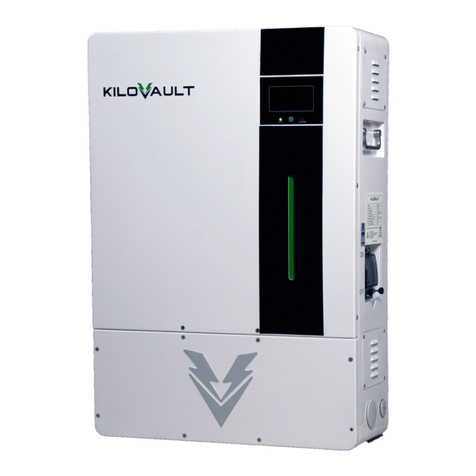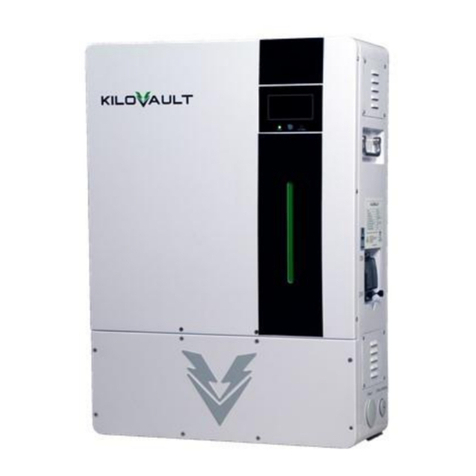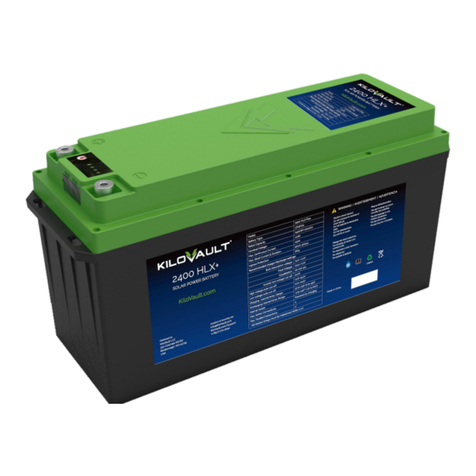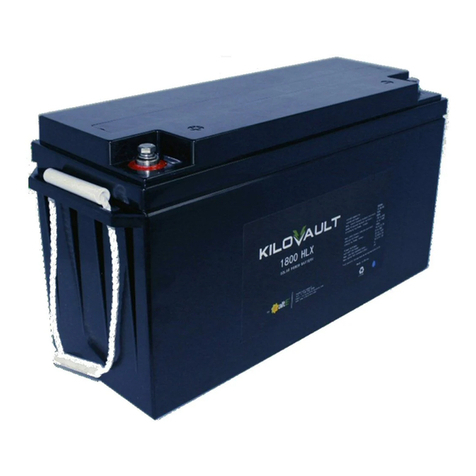
8 of 18
Revision 1.04
KiloVault® LLC • 330 Codman Hill Road, Boxborough, MA 01719 • +1 (888) 218-5924 • info@kilovault.com • www.kilovault.com
2. Overview
2.1. Features
Maintenance Free: No watering, 2-year shelf life, and low self-discharge rate
Maximized Cycle Life: Affordable high performance with 3000 Cycles at 50% depth of
discharge (DoD)
Super-Fast Charging: High charge rates allow the KiloVault® 2100 PLC to go from 50% up to
90% state of charge in under an hour
Exceptional Value: Less cost per kWh cycle than other lead acid batteries
Advanced Technology: KiloVault® 2100 PLC high power, energy dense batteries have a
specially formulated carbon additive that enhances the overall battery life
Partial State of Charge (PSoC) Applications: Pure lead + carbon = greater cycle life in both
PSoC and non-PSoC off-grid operations
5 Year Limited Warranty
Our newest member of the KiloVault family is not a sibling but a cousin! The 2100 KiloVault®
2100 PLC is a pure lead carbon sealed AGM deep cycle solar battery. It is a cost-effective,
maintenance-free battery offering superior performance in PSoC applications. These batteries
are designed for residential or light commercial off-grid, backup, or self-consumption
applications.
The KiloVault 2100 PLC is a Premium Pure Lead Punched Grid Cycling Battery, with excellent
anti-corrosion performance, and low float current, greatly extending calendar and cyclic life.
The KiloVault 2100 PLC has advanced Pure Lead + Carbon, which offers superior performance in
PSoC applications. Other lead acid chemistry batteries sulfate and lose overall performance
when left in a low state of charge over time. Solar energy storage could be discharged, followed
by an extended period of cloudy days, reducing the charging performance of the solar panel,
and therefore not charging the energy storage battery for days. With the KiloVault 2100 PLC,
this is not a problem.
It doesn’t stop there. The KiloVault 2100 PLC has strong high temperature ABS/Polycarbonate
Flame Retardant jars to UL94V-0 and <28% LOI (limiting Oxygen Index). Plate design provides
consistent, low internal resistance, and larger reaction surface. The large top posts allow low
connector resistance, and the convenient Front Terminal Adapter allows fast and easy
installation, zero overhead space required, and easier maintenance records documentation.
2.2. Product Technology
Valve Regulated Lead Acid (VRLA) maintenance free
Pure lead punched grid plate with low self-discharge
Excellent Charging Acceptance with High Charging Efficiency
UL94V-0 ABS+PC enclosure
Excellent PSoC Cycle Performance
Super-Fast Charging: from 50% up to 90% state of charge in under an hour
Integrated valve design controlling water loss, acid fog, and improved explosion resistance



































